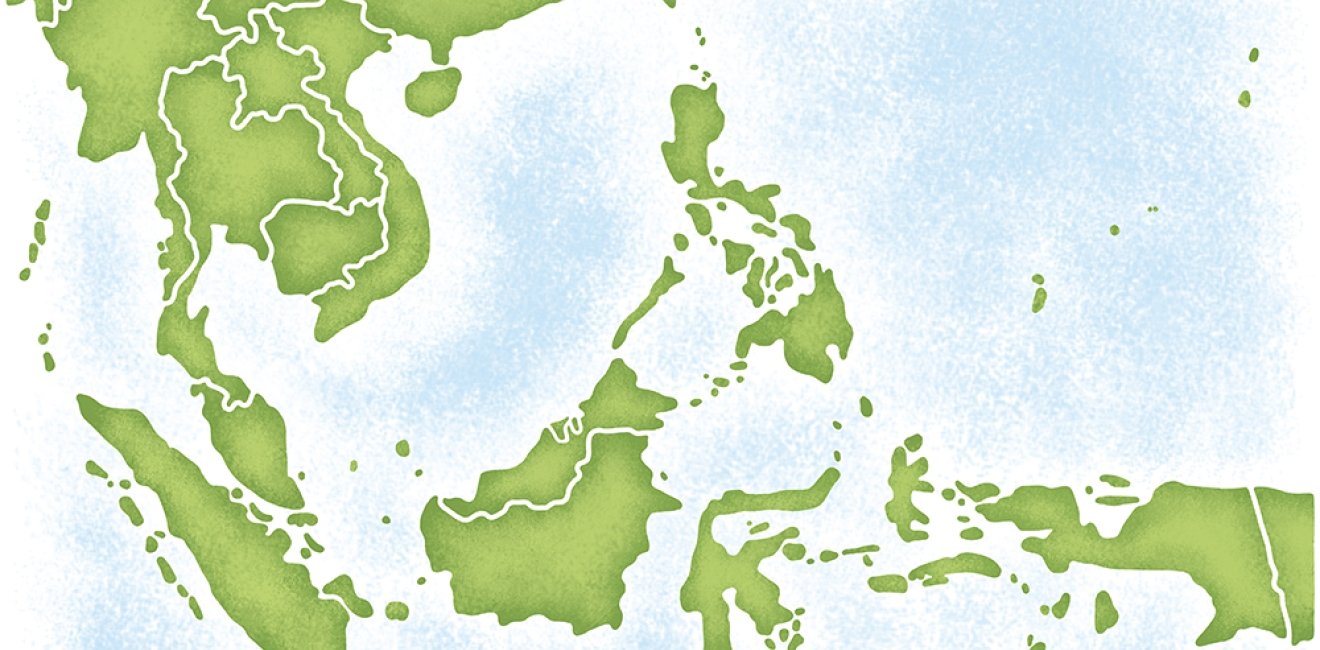
A blog of the Indo-Pacific Program
In recent years, U.S. military planners have shifted their focus from counterterrorism, low intensity conflict to great power, high intensity threats. The most likely single scenario for a major military engagement against a great power adversary would be one against China centered on the South China Sea. There are certainly other situations involving other challenges, but this is the most plausible and dangerous. Any such assertion must rest on an understanding that critical U.S. national interests, including both economic and security interests, are at stake and at risk. This is the first of three short essays examining the South China Sea as a first order strategic problem for the United States. This segment will address American interests. The second will analyze the strategic landscape in and around the South China Sea. The third will assess the policies/strategies currently employed by the United States in this arena as well as other plausible options.
HISTORICAL SETTING
Current developments in the South China Sea must be understood against the backdrop of recent history. The United States emerged from World War II as a resident great power in East Asia. In addition to far flung island territories (formerly occupied by Japan) in the South Pacific, the United States had a substantial military garrison in Japan and close ties with South Korea and the Philippines – a former colony. The Korean War produced formal defense treaties with each of these countries plus a new, permanent military presence in South Korea. The primary challenge to American regional predominance came from Maoist China – first through the Korean War and then via communist insurgencies throughout Southeast Asia – culminating in the Vietnam War (1963-75). Although ultimately unsuccessful in Vietnam, America emerged in a surprisingly advantageous strategic position in Southeast Asia with alliances intact with Thailand and the Philippines and friendly ties with Singapore, Malaysia, and Indonesia. By the end of the 1970s, communist insurgencies outside Indochina had been effectively suppressed. By the mid-1990s, relations with Vietnam had begun a rapidly improvement. The U.S. Seventh Fleet patrolled the region’s seaways, including the South China Sea, unchallenged – including agreed access to ports throughout much of the region.
The end of the Cold War found East Asia and the Western Pacific strategically quiescent. Countries across the region prioritized economic growth and modernization. The security assurances provided by the U.S. military presence coupled with the advent of regional institutions, notably ASEAN and the Asian Development Bank, nurtured that growth. Post-Mao China, with the emergence of Deng Xiaoping as paramount leader, became a major constructive presence dedicated to economic development fueled by opening the Middle Kingdom to the region and the world. The strategic landscape of the Western Pacific and Southeast Asia in the early 1990s was remarkably benign with optimism in full flower.
The geopolitical message was unmistakable: Western expectations that China was transitioning toward political democracy were entirely illusory.
There were, however, cautionary signs for those prepared to see them. In 1974, Chinese gunboats attacked and defeated a small South Vietnamese military outpost in the Paracels – an archipelago of reefs, atolls, and islets in the South China Sea. That grouping came under Chinese control – an event that went almost entirely unnoticed in the wider world as the drama marking the end of the Vietnam War played out. Nevertheless, Beijing had taken its first overt step to control the South China Sea. In 1989 troops from the Peoples Liberation Army entered Tiananmen Square and terminated the student-led democracy demonstrations and hundreds died. The geopolitical message was unmistakable: Western expectations that China was transitioning toward political democracy were entirely illusory. In 1995, the Philippines discovered that China had occupied and militarized an atoll (Mischief Reef) well within the Philippines EEZ and within maritime territory claimed by Manila. These straws-in-the-wind gained strategic context because the PRC had long published official maps showing a boundary encompassing almost the entire South China Sea – the “nine-dash line.”
That line was given little credence or attention in the U.S. – or in Asia – over the first five decades of the PRC’s history. However, there were a number of reasons to conclude that the line was no cartographic anomaly; it was an official indication of Beijing’s contention that the sovereign territory of China included the South China Sea. That claim remained shrouded in a calculated fog of ambiguity until 2010 when Secretary of State Clinton addressed the status of the South China Sea and its sea-lanes at a meeting of the ASEAN Regional Forum in Hanoi. In a meeting attended by the foreign ministers of 26 nations from the broader region, Clinton simply asserted that the South China Sea was subject to multiple territorial claims and a multinational mechanism should be established to find a peaceful diplomatic solution. She also observed that the sea-lanes through the South China Sea constituted a “global commons” not subject to sovereign claims by any nation. The reaction of the Chinese Foreign Minister was incendiary – and revealing. Shortly after the ARF concluded, an official spokesman for the Chinese Defense Ministry asserted China’s “indisputable sovereignty” over the South China Sea. Currently, President Xi Jinping makes frequent references to China’s possession of the South China Sea “since ancient times” – an assertion that lacks any validity historically or legally.
The diplomatic tempest at the ARF came when U.S. security attention was preoccupied with ongoing military operations in Afghanistan and Iraq as well as the global counterterrorism campaign with Osama bin Laden still at large. Few in Washington were inclined to see the South China Sea as a strategic priority engaging vital U.S. national interests. Yet, it was – and is – all of that.
NATIONAL INTERESTS
U.S. interests in the South China Sea fall into three broad categories including: (1) Economic interests tied to the sea-lanes; (2) Defense ties with allies and other security partners; and (3) Implications for the global balance of power and influence. In each of these arenas, a successful Chinese effort to seize control of the South China Sea will have a profound impact – and each is worth elaboration.
Sea-Lanes
The sea-lanes that pass through the South China Sea are the busiest, most important, maritime waterways in the world. In 2016, they carried fully one-third of global shipping with an estimated value of $3.4 trillion. That included nearly 40 percent of China’s total trade and 90 percent of petroleum imports by China, Japan, and South Korea – and nearly 6 percent of total U.S. trade. These same sea-lanes are a vital military artery as the U.S. Seventh Fleet transits regularly between the Pacific and Indian Oceans (including the Bay of Bengal).
Defense Ties
America has formal defense/security alliances with five Asian countries: Japan, South Korea, the Philippines, Thailand, and Australia. In addition, the United States has affirmed some responsibility for the defense of Taiwan and has close security ties with Singapore and New Zealand. Beyond that, there are a variety of formal security cooperation agreements with Vietnam, Indonesia, and Malaysia. Cobra Gold, hosted by Thailand and led by the United States, is the largest annual multilateral military exercise in Asia. In sum, the United States has built and maintained a dense network of security links and obligations throughout East and Southeast Asia – all sustained by regular contact with the Seventh Fleet as it transits the region via the South China Sea.
Balance of Power
The most important and least tangible stake in the South China Sea concerns the preservation (or not) of a regional “rules-based” order supported by U.S. power. This order embodies certain foundational political principles – respect for international law, preservation of the real sovereign independence of regional states, a refusal to legitimate unilateral territorial expansion, and the unconditional acceptance of the sea-lanes as a global commons. Conservation values – protection of marine habitat against wanton, unnecessary despoliation – are also essential. This concept of regional order links tightly to a broader set of interests, values, and institutions embodied in the post-World War II international system – a system that reflects U.S. values, U.S. leadership and is consonant with U.S. interests.
The message will be clear; the era of American international leadership and predominance is over and a new preeminent power has taken its place.
If China succeeds, in displacing U.S. power in the Western Pacific and Chinese territorial expansion into the South China Sea becomes permanent and codified, global geopolitics will have entered a new and very different era. Southeast Asia will inevitably be rendered subordinate and compliant to China’s will. Australia will be isolated with an uncertain future. Japan and South Korea will face a perilous new reality with China in control of the seaborne lifeline of both countries. The credibility of U.S. security support for allies and partners will be shredded. India will lose its current freedom of access into the South China Sea and much of Southeast Asia. European access to Asia will be through Beijing. All this will occur in a region that is increasingly the vibrant center of the world economy. The message will be clear; the era of American international leadership and predominance is over and a new preeminent power has taken its place.
If this sounds overstated or overwrought – it is not. The United States and the West more broadly can live with such an outcome. Nevertheless, for America, this new world will be profoundly discomfiting and even alien. In sum, the South China Sea is the immediate arena where two alternative geopolitical paradigms are contesting for supremacy. The outcome of that contest will profoundly influence, if not shape, the 21st century world.
Follow the Asia Program on Twitter @AsiaProgram. or join us on Facebook.
The views expressed are the author's alone, and do not represent the views of the U.S. Government or the Wilson Center. Copyright 2019, Asia Program. All rights reserved.
Author

Adjunct Professor, Johns Hopkins University; Former Professor of National Security Policy, National War College and Deputy Staff Director, Senate Select Committee on Intelligence

Indo-Pacific Program
The Indo-Pacific Program promotes policy debate and intellectual discussions on US interests in the Asia-Pacific as well as political, economic, security, and social issues relating to the world’s most populous and economically dynamic region. Read more





